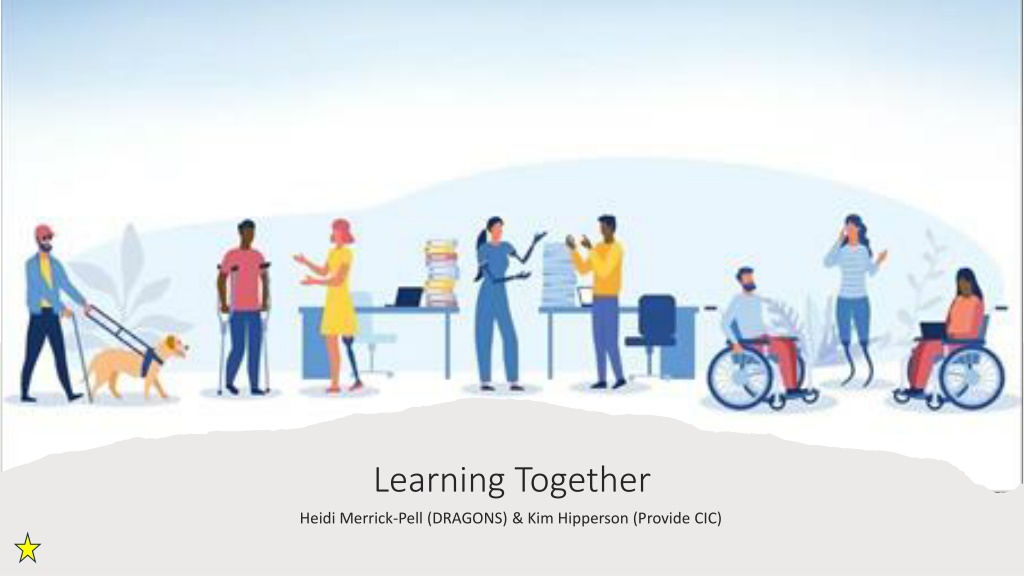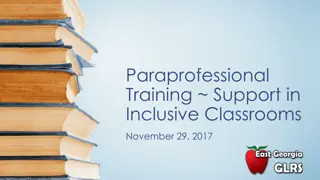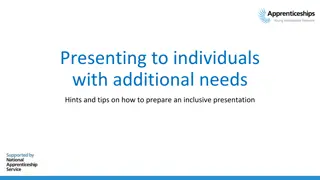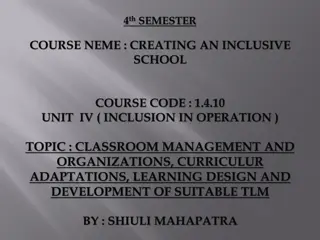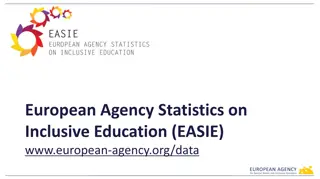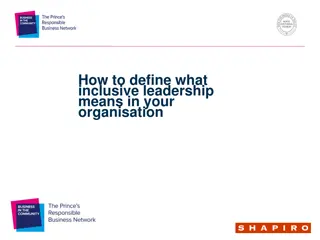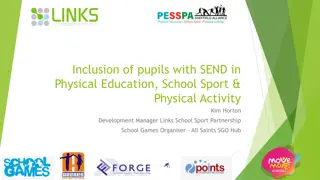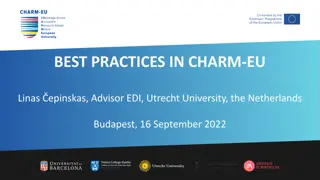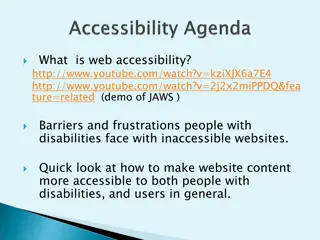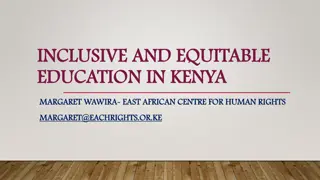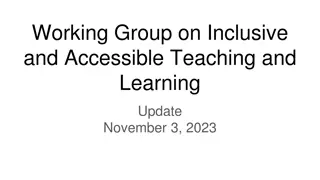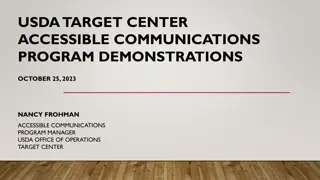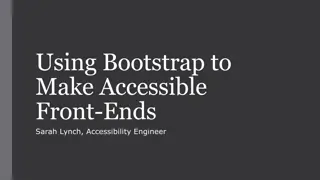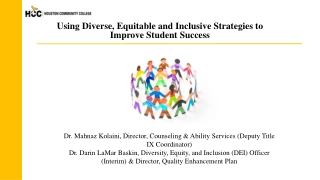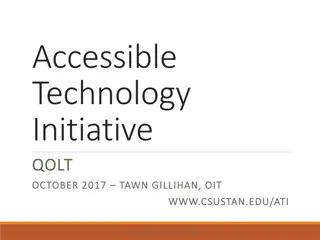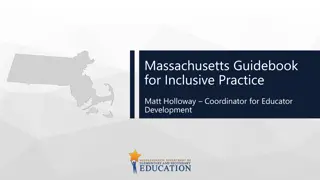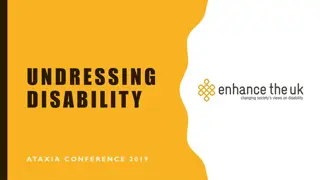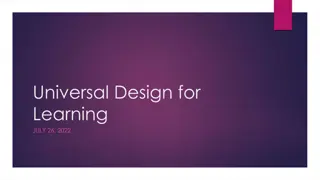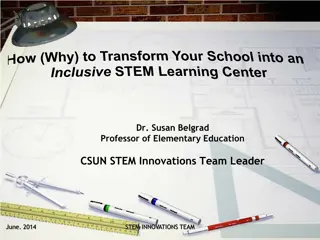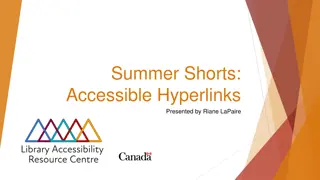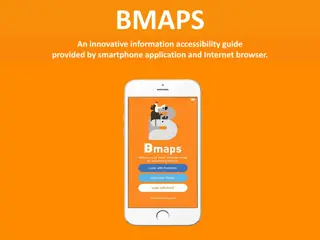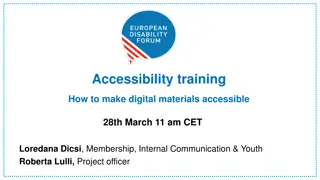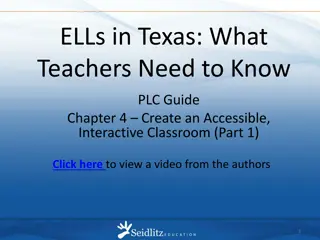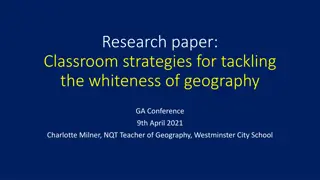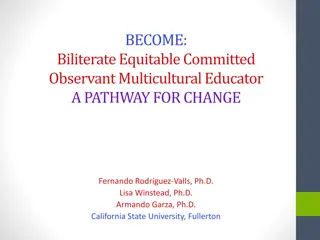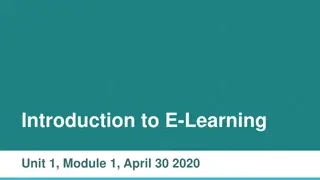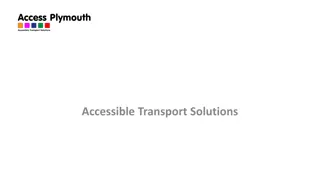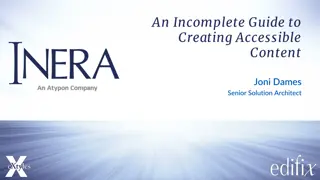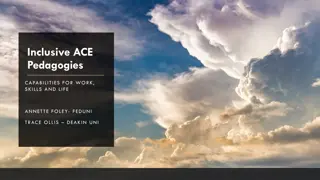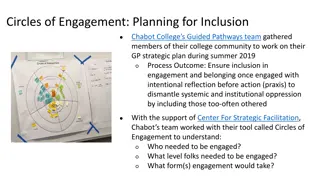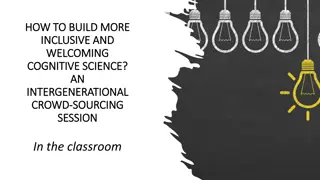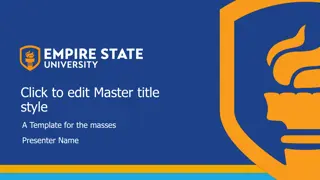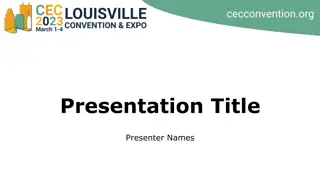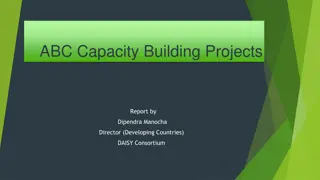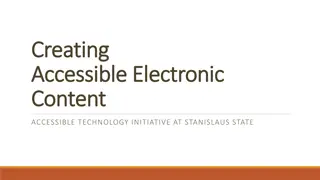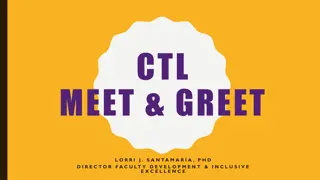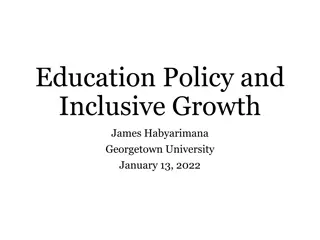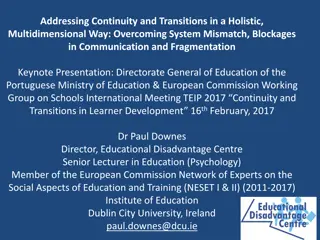Making Learning Accessible: Strategies for Inclusive Education
Explore how to adapt learning activities to support young people in a creative and safe environment. Understand the importance of making learning accessible to all, celebrating strengths, and addressing individual needs. Learn about reasonable adjustments and inclusive teaching practices to ensure everyone can participate fully in the learning process.
Download Presentation

Please find below an Image/Link to download the presentation.
The content on the website is provided AS IS for your information and personal use only. It may not be sold, licensed, or shared on other websites without obtaining consent from the author. Download presentation by click this link. If you encounter any issues during the download, it is possible that the publisher has removed the file from their server.
E N D
Presentation Transcript
Learning Together Heidi Merrick-Pell (DRAGONS) & Kim Hipperson (Provide CIC)
Youth worker background Informal education - NCS (National Citizenship Service) - Prince s Trust Team Leader - Health Promotion Specialist Sex education
DRAGONs (Disability Real Action Group of Norfolk is a group made up young people aged 13-25 with Special Educational Needs and/or Disabilities (SEND). The group s main aims are to make services in Norfolk more accessible to people with SEND, and to ensure that disabled young people in Norfolk have a voice in the services they receive.
Outcomes Together with young people you will explore how you can adapt your learning activities to support young people in a creative & safe environment. Adapting to young people s different ways of learning Making learning accessible and including everyone equally Making space and time for exploration and curious questions Adults do not need to know everything but must be willing to learn together A web engine of choice!
Adapting to young peoples different ways of Informal learning Open Minded approach. Use what works for them! Think outside the box and how to evidence learning! Everyone should get an opportunity to work on their weaknesses but also celebrate their strengths Think about young people as individuals, think about their individual needs and not just numbers. Teach Young People to learn and enjoy learning.
Plan Develop Do Review
Making Learning Accessible to All
Making Learning Accessible to All Reasonable Adjustments Reasonable Adjustments When making learning accessible the aim is to make sure all young people can understand what is being taught and communicate easily. A key part of this is reasonable adjustments. Familiarise yourself with your students' needs and be aware of any reasonable adjustments before the session. Ensure reasonable adjustments are in place during the session. Try to avoid singling out those with reasonable adjustments as this can be embarrassing and isolating. Make sure the learning space is accessible to all in attendance. Allow plenty of time. Please don t get cross at people for things they can't help.
Making Learning Accessible to All Patience is Key Patience is Key Everybody learns at a different pace, and some may take more time than others. People with Special Educational Needs and Disabilities (SEND) may need additional time and support: Information may need to be repeated more than once before it is understood. Use language that your audience find easy to understand. Try not to get frustrated. Clarify that students have understood before moving on.
Making Learning Accessible to All A Holistic Approach A Holistic Approach Looking at young people holistically, rather than just seeing how they perform within a particular learning space or subject, means valuing their skills and interests even though they may not be directly relevant to the learning objectives. Praise their skills in other areas and try and apply it to what you are trying to teach them. Having a good rapport with the young people you are teaching can help with this. This is important because: If the young person feels they have value despite struggling with a certain subject this may give them the confidence to continue learning as they don t feel they are at fault or that they are just dumb . Instead, they see difficult tasks as hurdles rather than a blockade.
Learning Together Being open to learning alongside young people and not being afraid to say, I don t know, let s find out , can create a more comfortable learning environment. An adult admitting that they don't know everything can show young people that it s ok not to know everything. Creating a safe space to learn together can have mutual benefit for teachers and students. You don t have to be an authority on every topic nobody knows everything. Showing you have flaws may make you more relatable to the young people. Don t be afraid to use google (Web engine of your choice)
Learning Together Learning Zones Learning Zones Young people and adults have a comfort zone, a growth zone, and a stress zone. We all need to be pushed into the growth zone to learn, but not so far that we enter the stress zone. Nobody can learn in the stress zone. Setting boundaries with young people about what you expect from them and what they should expect from you can help to keep everybody in the growth zone.
Learning Together Learning From Young People and the Importance of Youth Voice Learning From Young People and the Importance of Youth Voice Sometimes young people know best! Young people are usually the best authority on themselves and what they need to learn. Listening to young people talk about their experiences has helped me to become a better advocate for those who struggle to speak for themselves. Always take time to listen to young people even when it is difficult. Don t put young people in a box: Assume that I Can Global Down s Syndrome Day Video This does have swearing and a reference to sex.
Making space and time for exploration and curious questions
Where else will they get the answers? Appropriate time place? Most young people are asking for a reason! what can that lead on to?
